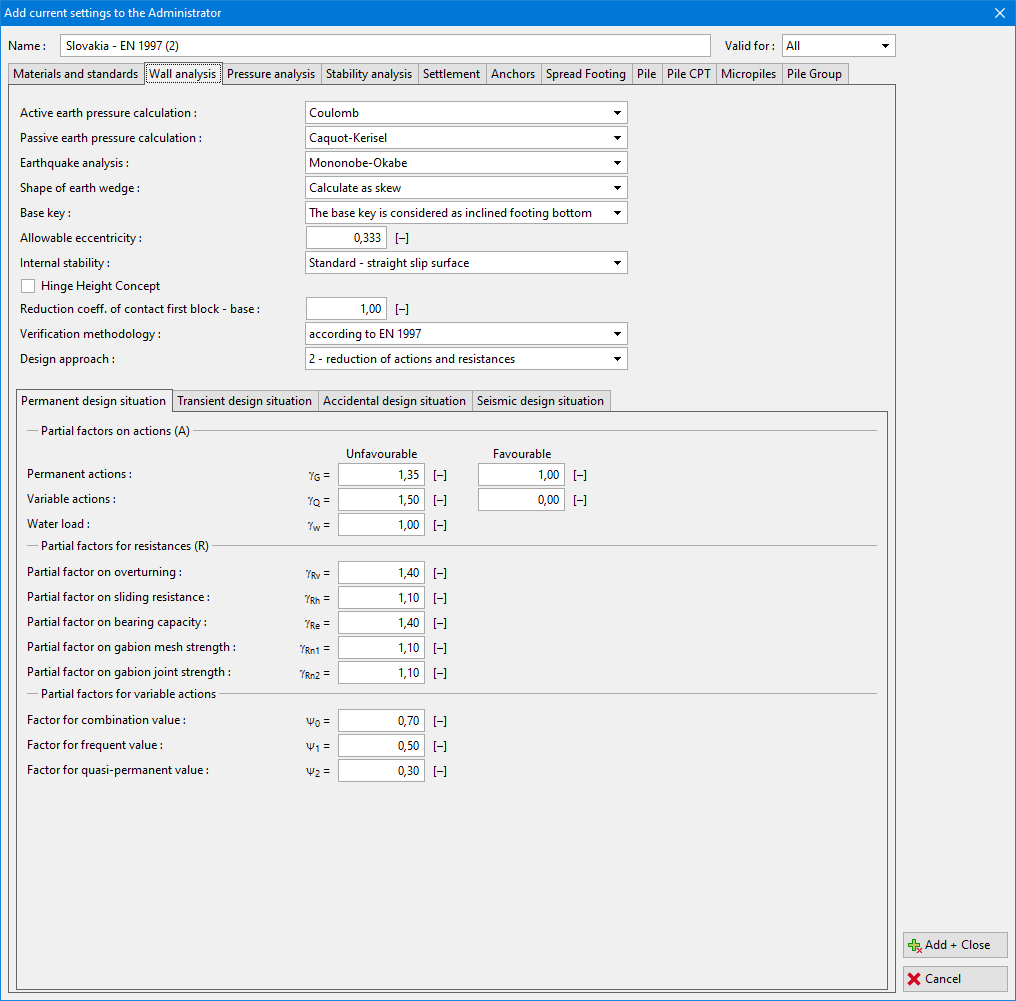Wall Analysis
This tab allows inputing parameters for the wall analysis:
- Active earth pressure calculation (Caquot, Coulomb (CSN 730037), Müller-Breslau (DIN 4085), Mazindrani (Rankine), Absi, SP 22.13330.2016).
- Passive earth pressure calculation (Caquot-Kerisel (CSN 730037), Coulomb, Müller-Breslau, Sokolovski (DIN 4085), Mazindrani (Rankine), Absi, SP 22.13330.2016).
- Earthquake analysis (Mononobe-Okabe, Arango, JTJ 004-89, JTS 146-2012, SL 203-97).
- Shape of earth wedge (Calculate as skew, Consider always vertical).
- Base key (The base key is considered as front face resistance; the base key is considered as inclined footing bottom).
- Allowable eccentricity - for assessment of contact stress at footing bottom is the value assumed of maximum allowable eccentricity in the range of 0.1 to 0.4.
- Internal stability - this way of calculation is adopted in "MSE Wall". The slip surface has a different shape (straight, broken) according to the selected standard of calculation.
- Hinge Height Concept - represents the way of analysis of precast walls according to AASHTO, in which the favorably acting gravity force of a part of the structure is reduced. It is used only in the "Redi Rock Wall" program.
- In the case of verification methodology according to the limit states and factor of safety, it is possible to reduce the parameters of the foundation - soil interface. The reduction coefficient of structure - soil interface µ represents the amount of wall resistance against slipping resp. against translation when in contact with the soil.
- When running the verification analysis according to the theory of limit states, the program enables the reduction of the tangent of the angle of internal friction φ employing the coefficient γmφ.
- Verification methodology (factor of safety, limit states, analysis according to EN 1997, analysis according to LRFD, analysis according to the Chinese standards).
- Design situations are specified for all verification methodologies.
 "New settings" dialog window - "Wall analysis" tab
"New settings" dialog window - "Wall analysis" tab